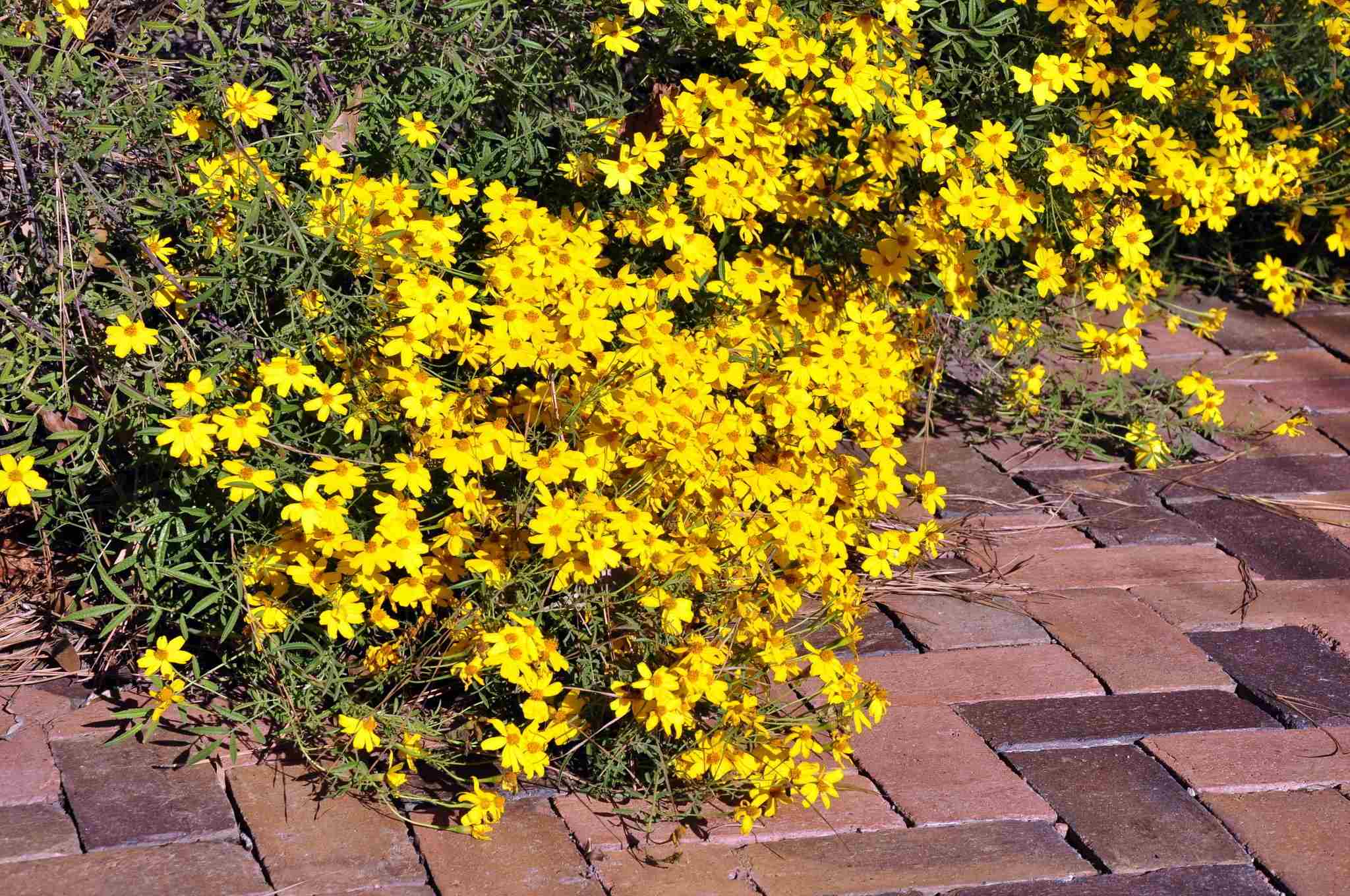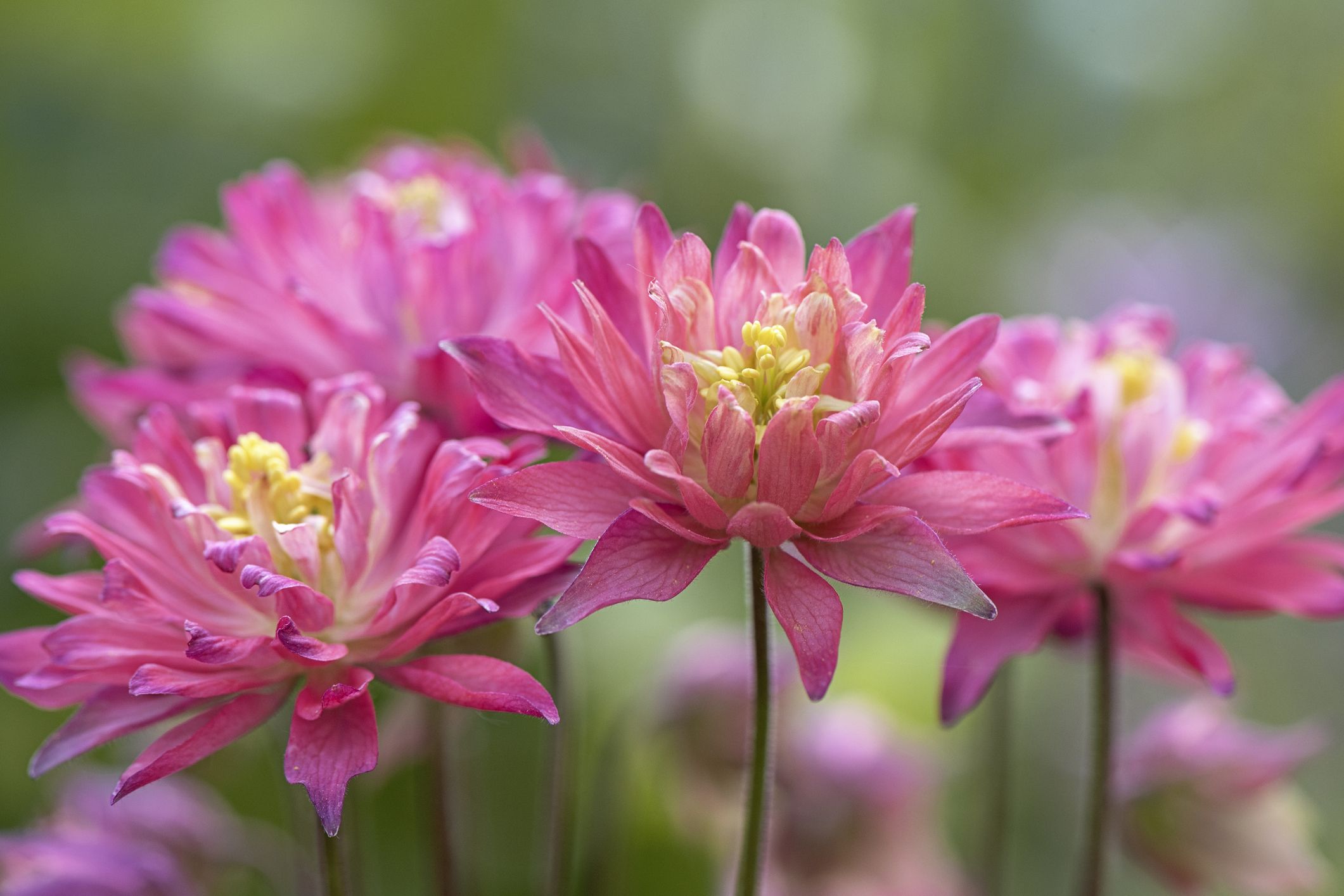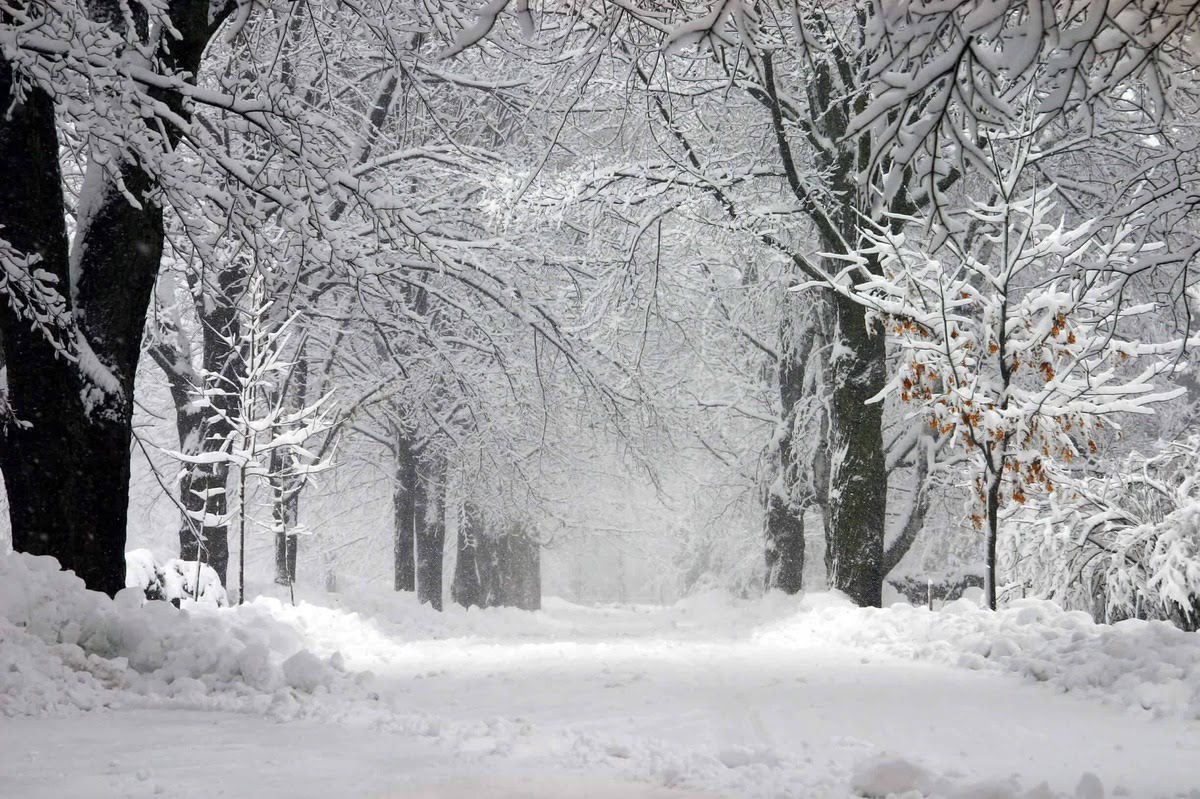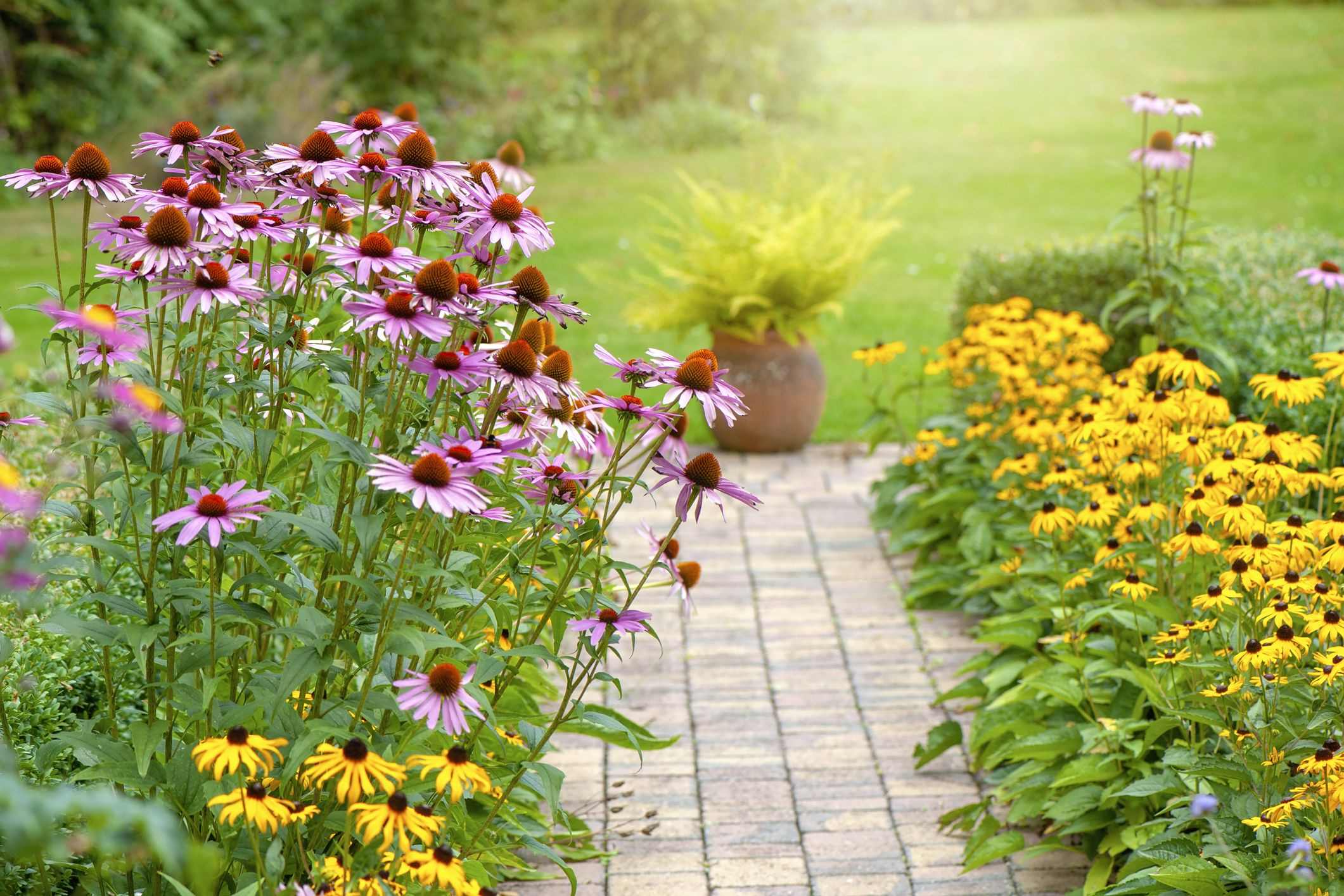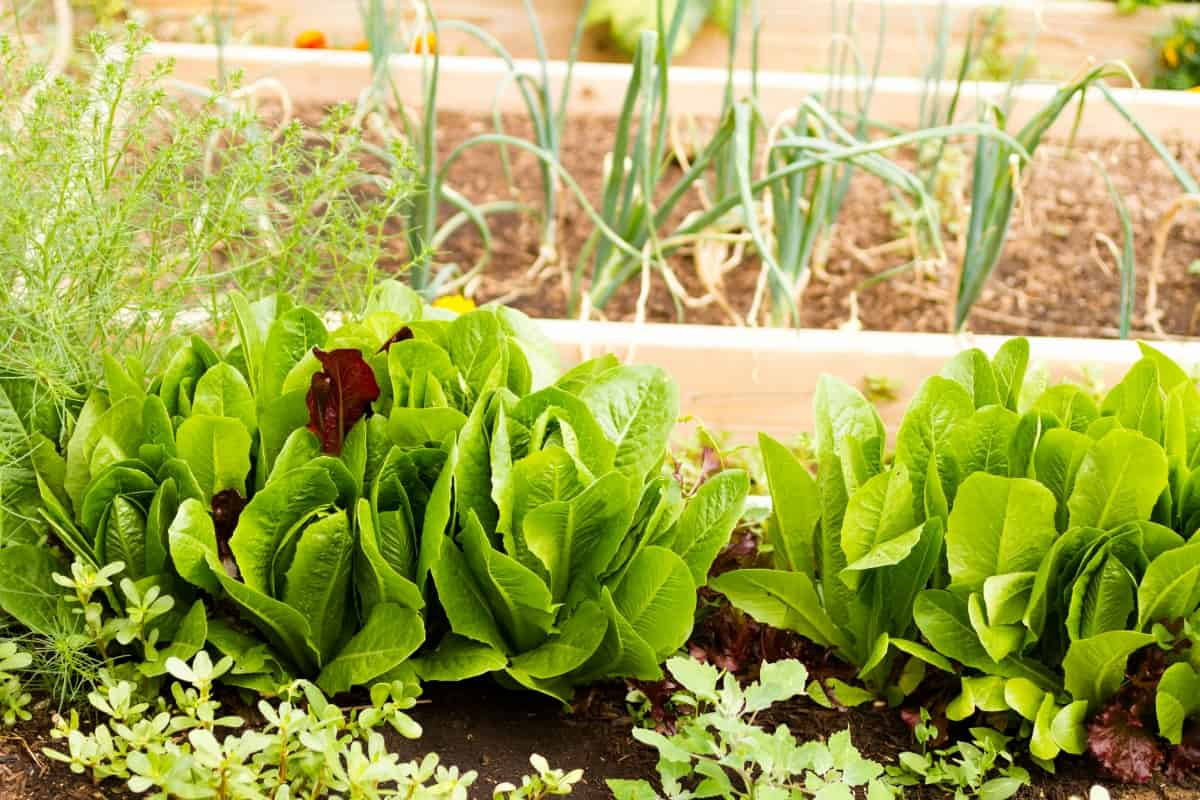Home>Gardening Techniques>Seasonal Gardening>What To Do With Potted Perennials In Winter
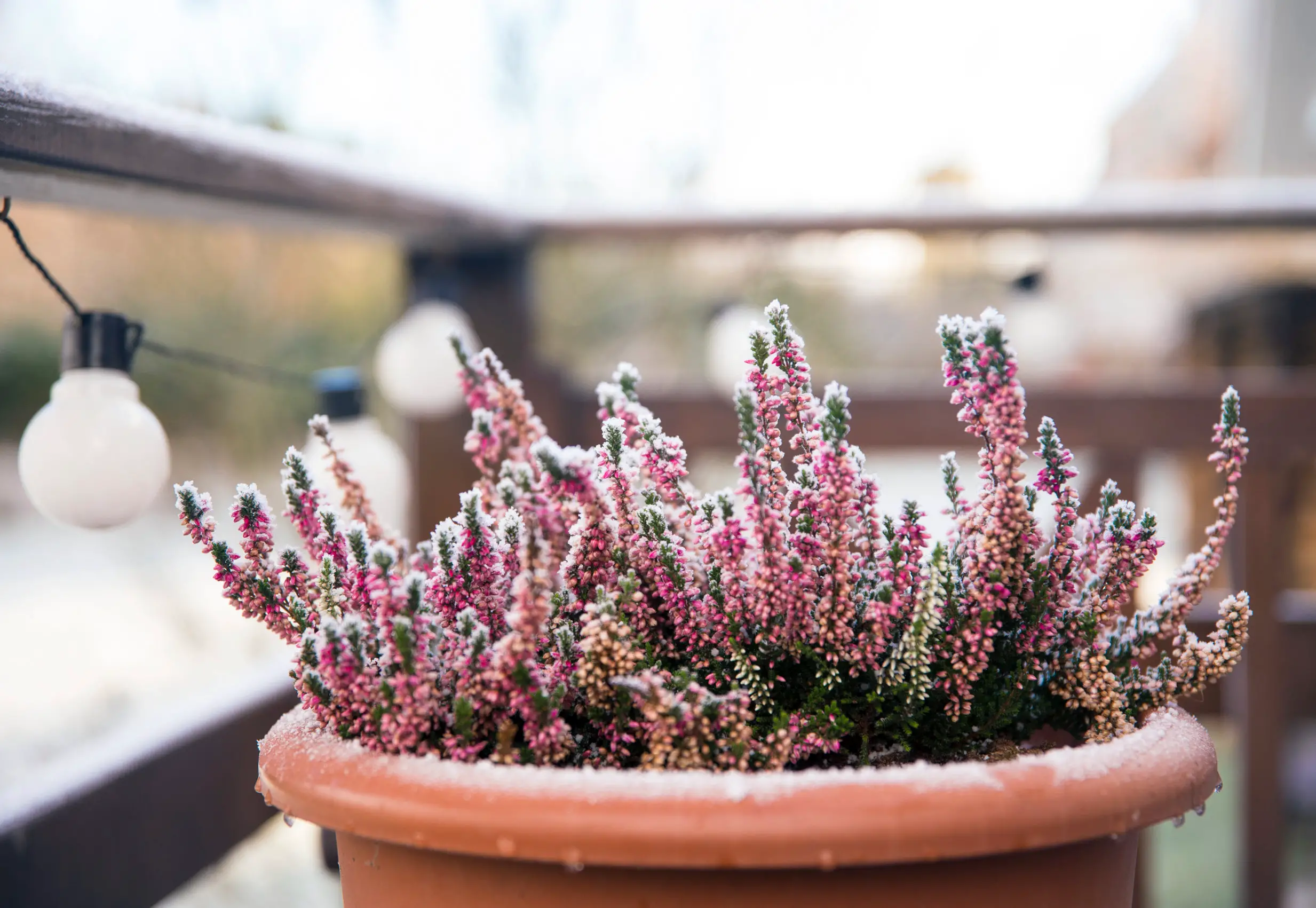

Seasonal Gardening
What To Do With Potted Perennials In Winter
Published: August 23, 2023
Discover essential tips for seasonal gardening and learn what to do with your potted perennials during the winter months.
(Many of the links in this article redirect to a specific reviewed product. Your purchase of these products through affiliate links helps to generate commission for Chicagolandgardening.com, at no extra cost. Learn more)
Table of Contents
Introduction
As the seasons change and the temperatures start to drop, it’s time to start thinking about the well-being of your potted perennials. These beautiful plants have brought joy and color to your garden throughout the year, and now it’s important to give them the care they need to survive the harsh winter months.
Potted perennials, as the name suggests, are plants that can live for multiple years. They are typically grown in containers rather than in the ground, making them more vulnerable to the cold and frost that winter brings. This makes it crucial to take steps to protect them and ensure their longevity.
Preparing your potted perennials for winter involves several key considerations. Proper protection, watering, pruning, and temperature management are all essential for their survival. Additionally, some perennials may need to be overwintered indoors to shield them from the freezing temperatures.
By taking these necessary precautions, you can ensure that your potted perennials will not only survive the winter but also thrive when spring arrives. In this article, we will delve into the various steps you can take to care for your potted perennials during the colder months.
Understanding Potted Perennials
Before delving into the specific care techniques for potted perennials during winter, it’s important to have a basic understanding of what these plants are. Potted perennials are plants that have a life cycle of more than two years, meaning they will come back year after year with proper care.
Many different types of plants fall under the category of potted perennials, including flowers, shrubs, and herbs. Some popular examples include roses, lavender, coneflowers, and hostas. These plants add long-lasting beauty and appeal to any garden or patio space.
The advantage of growing perennials in containers is that they provide flexibility and ease of movement. You can change their position, relocate them to new spots, or bring them indoors when needed. This allows you to create stunning arrangements and experiment with different styles and aesthetics.
When selecting potted perennials, it’s important to consider their specific requirements for sunlight, water, and soil. Different varieties have different needs, and understanding these requirements will help ensure their overall health and resilience during the winter months.
Some perennials are hardy and can withstand colder temperatures, while others are more delicate and require extra protection. Researching the specific needs of the plants you have will help you tailor your winter care approach accordingly.
Additionally, it’s crucial to be aware of the growth habits of your potted perennials. Understanding how they grow, spread, and flower will help inform your pruning and maintenance practices to ensure optimal growth and health.
By understanding the nature of potted perennials and their individual requirements, you can provide them with the care they need to thrive throughout the seasons, including the cold winter months.
Preparing Potted Perennials for Winter
When winter approaches, it’s essential to prepare your potted perennials for the challenging conditions ahead. By taking the following steps, you can help ensure their survival and promote healthy growth when spring arrives.
a. Evaluate Plant Health: Before the first frost hits, thoroughly inspect your potted perennials for any signs of disease or pest infestation. If you notice any issues, take appropriate measures to address them, such as removing affected foliage or treating with organic pest control methods. Healthy plants have a better chance of withstanding harsh winter conditions.
b. Gradually Reduce Watering: As the temperatures drop, gradually reduce the amount of water you give your potted perennials. This will help prevent waterlogged soil, which can lead to root rot. However, be careful not to let the soil dry out completely. Aim for a balance where the soil remains slightly moist, but not soggy.
c. Stop Fertilizing: With the onset of winter, it’s time to stop fertilizing your potted perennials. Fertilizers encourage new growth, which is vulnerable to damage from cold temperatures. Instead, focus on providing adequate protection and nurturing existing foliage.
d. Mulch for Insulation: Adding a layer of mulch around the base of your potted perennials can provide insulation and help regulate soil temperature. Organic materials such as straw, shredded leaves, or bark chips work well for this purpose. Ensure the mulch is a few inches deep, covering the base of the plant but not touching the stems.
e. Shield from Harsh Winds: Winter winds can be detrimental to potted perennials, leading to dehydration and damage. Consider placing your containers in a sheltered location, such as against a wall or near other larger plants that can act as natural windbreaks.
f. Protect Vulnerable Containers: If your containers are made of materials that may crack or break in freezing temperatures, such as terra cotta or ceramic, consider wrapping them with burlap or moving them to a more sheltered area. This will help prevent damage and extend the life of your pots.
g. Label Your Plants: As you prepare your potted perennials for winter, make sure to label them if you have multiple varieties. This will help you identify them when they are dormant or when new growth emerges in the spring, ensuring you provide them with the right care and attention.
By taking these steps to prepare your potted perennials for winter, you are setting the stage for their success and resilience during the colder months. Remember, each plant may have specific needs, so adapt your approach accordingly to optimize their chances of survival.
Providing Adequate Protection
When it comes to caring for potted perennials during winter, providing adequate protection is crucial. The following measures will help shield your plants from the harsh elements and ensure their overall health and survival.
a. Use Protective Covers: Protecting your potted perennials with covers can go a long way in safeguarding them from freezing temperatures and frost. Options include frost blankets, burlap, or even old bed sheets. Make sure the cover reaches all the way to the base of the pot and secure it firmly to prevent it from blowing off in strong winds.
b. Employ Hardscape Elements: Utilize hardscape elements such as walls, fences, or trellises to create a protective barrier around your potted perennials. Position the containers close to these structures to provide natural protection against cold winds.
c. Group Containers Together: Grouping your potted perennials together can create a microclimate that offers some insulation and protection. The plants will benefit from the collective heat they generate, helping to mitigate the impact of freezing temperatures.
d. Insulate with Bubble Wrap: For extra insulation against the cold, consider wrapping the containers of your potted perennials with bubble wrap. This will provide an additional layer of protection and help maintain stable temperatures around the plants.
e. Elevate Containers: To prevent waterlogged soil and root rot, elevate your containers slightly off the ground. This will allow excess water to drain freely and reduce the risk of water accumulation around the roots.
f. Provide Ventilation: While it’s important to protect your potted perennials, it’s equally important to provide adequate ventilation. This helps prevent excess humidity and minimize the risk of fungal diseases. Remove covers periodically on milder days or when there is adequate airflow.
g. Insulate Container Bottoms: Place insulating material, such as polystyrene foam or small bricks, underneath the containers. This helps provide an extra layer of protection against cold temperatures that can seep through the bottom of the pots.
By implementing these protective measures, you are giving your potted perennials the best chance to survive the winter and thrive when spring arrives. Assess the specific needs of your plants and adapt the level of protection accordingly. Remember to remove any covers or wraps during periods of milder weather to allow proper air circulation and prevent overheating.
Watering and Hydration
Proper watering and hydration are essential for the health and survival of your potted perennials during winter. While it’s important to reduce watering in colder months, you must still provide adequate moisture to sustain the plants. Consider the following tips to ensure your potted perennials receive the right amount of hydration:
a. Monitor Soil Moisture: Check the moisture levels of the soil regularly by inserting your finger about an inch deep into the soil. If it feels dry at that depth, it’s time to water your plants. Keep in mind that overwatering can be just as damaging as underwatering, so maintain a balance.
b. Water Thoroughly: When watering your potted perennials, ensure that the water penetrates deep into the soil. This encourages the roots to grow deeper and promotes better drought tolerance. Water until you notice water escaping through the drainage holes at the bottom of the containers.
c. Water During the Day: Ideally, water your plants during the day to allow any excess moisture on the leaves to evaporate before the temperatures drop at night. This reduces the risk of fungal diseases and rot caused by prolonged dampness.
d. Adjust Watering Frequency: As the weather gets colder and the plants enter dormancy, you can decrease the frequency of watering. This prevents water accumulation and allows the plants to adjust to their natural resting phase during winter.
e. Avoid Standing Water: Ensure proper drainage by elevating your containers slightly off the ground. Standing water can lead to root rot and other fungal issues. If you notice excessive water pooling in the saucers or trays, drain it to prevent waterlogged soil.
f. Hydrate During Thaws: Take advantage of milder winter days or thaws by giving your potted perennials a thorough watering. This provides them with the necessary hydration and helps replenish any moisture lost during the colder periods.
g. Consider Ice Reduction Measures: In areas with frequent freezing temperatures, consider using ice reduction measures, such as placing insulating material on top of the soil or using frost-resistant containers. These steps can help prevent water in the soil from freezing, ensuring better hydration for the plants.
By properly managing the watering and hydration of your potted perennials, you are providing them with the necessary moisture to sustain them through the winter months. Always evaluate the specific needs of each plant and adjust your watering routine accordingly to ensure their optimal health and vitality.
Monitoring Temperature Exposure
Monitoring temperature exposure is a critical aspect of caring for your potted perennials during winter. Extreme cold temperatures can be detrimental to the health of the plants, causing damage to their foliage, roots, and overall vitality. To protect your potted perennials, consider the following guidelines for temperature management:
a. Know Cold Hardiness: Understand the cold hardiness of your potted perennials by researching their specific temperature tolerance. This will help you determine if they can withstand certain freezing temperatures or if additional protection is necessary.
b. Bring Indoors when Necessary: For perennials that are particularly sensitive to cold temperatures, consider bringing them indoors during the winter months. Find a suitable location in your home with adequate light and temperature conditions to keep them healthy. This option ensures optimal protection against extreme cold.
c. Utilize Microclimates: Take advantage of microclimates in your garden or outdoor space. These are areas where certain plants may experience slightly different temperature conditions due to factors such as shelter from walls or proximity to buildings. Positioning your potted perennials in these favorable microclimates can offer added protection.
d. Cover During Frost Events: Stay vigilant about weather forecasts and cover your potted perennials when frost events are expected. Frost can damage plant tissues, leading to wilting and discoloration. Use blankets, row covers, or frost cloths to protect the plants overnight until the frost has melted.
e. Monitor Indoor Temperatures: If you decide to overwinter your potted perennials indoors, ensure the room temperature remains within the appropriate range for their specific needs. Extremes in temperature, such as placing them near drafty windows or heating vents, can be harmful. Aim for a consistent, moderate temperature to promote healthy growth.
f. Limit Exposure to Heat Sources: While protecting your potted perennials from cold temperatures is important, it’s equally essential to avoid exposing them to excessive heat sources. Direct heat from radiators, fireplaces, or heating vents can dry out the plants and cause stress. Maintain a balanced temperature environment for their well-being.
g. Monitor Weather Fluctuations: Be mindful of rapid temperature fluctuations or unseasonably warm spells during the winter. These shifts can trick plants into breaking dormancy prematurely, making them more susceptible to cold damage. Take appropriate measures, such as covering or moving the containers, to mitigate the effects of such fluctuations.
By carefully monitoring the temperature exposure of your potted perennials, you can protect them from extreme cold and ensure their long-term health. Adapt your strategies based on the individual needs of each plant and the weather conditions in your area. Remember, prevention is key in maintaining the vitality and winter survival of your cherished plants.
Pruning and Cutting Back
Pruning and cutting back your potted perennials in preparation for winter is crucial for their overall health and future growth. Proper pruning helps remove dead or damaged foliage, promotes better air circulation, and encourages strong, healthy plants. Follow these guidelines when pruning your potted perennials:
a. Remove Dead or Diseased Foliage: Inspect your potted perennials for any dead or diseased leaves, stems, or flowers. Removing these parts not only improves the overall appearance of the plants but also prevents the spread of disease and encourages new growth.
b. Cut Back Excess Growth: If your potted perennials have experienced vigorous growth during the growing season, it’s beneficial to cut back some of that excess growth. Prune back the stems to a manageable size, ensuring a balanced and tidy appearance. This also helps prevent damage from strong winter winds.
c. Trim Long Branches: Trim any long branches that may tend to get damaged or break off in windy conditions. Shorten them to a length that reduces the risk of breakage and promotes a more compact and sturdy structure.
d. Leave Some Foliage for Protection: While it’s important to remove dead and excess growth, it’s also essential to leave some foliage intact. The remaining leaves provide a level of protection to the plant during winter and act as a buffer against freezing temperatures.
e. Prune After Frost Events: Avoid pruning your potted perennials right before or during frost events. Frost-damaged foliage can help protect the lower portions of the plant. Wait until any potential frost danger has passed before pruning to ensure the plants are not left vulnerable.
f. Sterilize Pruning Tools: Before pruning, make sure to sterilize your pruning tools with a disinfectant solution. This helps prevent the spread of any diseases or pathogens between plants. Clean tools ensure that the cuts you make are clean and minimize the risk of introducing infections.
g. Prune with Care: When pruning, make clean cuts just above leaf nodes or buds. Avoid cutting into the main stem or removing too much of the plant. Prune selectively and consider the overall shape and structure of the plant, maintaining its natural form.
By practicing proper pruning techniques, you can promote the health and vigor of your potted perennials during winter. Remember to prune lightly and conservatively, as some perennials benefit from a more natural, untamed appearance. Adapt your pruning routine to the specific needs of each plant, ensuring their continued growth and beauty.
Overwintering Indoors
For potted perennials that are sensitive to freezing temperatures or those that may not survive winter outdoors, overwintering them indoors is a great option. By providing a suitable environment, you can ensure the health and survival of these plants during the colder months. Here are some important considerations for successfully overwintering your potted perennials indoors:
a. Select an Appropriate Location: Choose a well-lit area in your home with the right temperature and humidity levels for the specific plants you are overwintering. South-facing windowsills or rooms with grow lights can provide the necessary light requirements.
b. Maintain Ideal Temperature: Different potted perennials have different temperature requirements. Ensure that the indoor temperature remains within the appropriate range for the plants. Avoid placing them near drafty windows or sources of heat that may cause temperature fluctuations.
c. Provide Adequate Light: While indoor conditions may not offer the same intensity of natural sunlight as the outdoors, you can supplement with artificial grow lights. Position the lights according to the specific needs of your plants, adjusting the distance and duration to simulate natural light cycles.
d. Adjust Watering and Humidity: Indoor environments can be drier, so be mindful of the watering needs of your potted perennials. Adjust the frequency and amount of water accordingly, allowing the soil to dry out slightly between waterings. If the air becomes too dry, consider using a humidifier or placing the plants on humidity trays with water-filled pebbles.
e. Monitor for Pests and Diseases: Indoor spaces can still be susceptible to pests and diseases, so regularly inspect your potted perennials for any signs of infestation or illness. Treat any issues promptly with organic pest control methods or appropriate treatments to prevent the spread to other plants.
f. Adapt Fertilization: During the winter months, reduce or eliminate fertilization for your overwintered potted perennials. They enter a period of dormancy and do not require as much nutrients as they do during the active growing season.
g. Gradually Transition Outdoors: As winter nears its end and the temperatures start to warm up, gradually acclimate your potted perennials to outdoor conditions. This helps them adjust to the changes in light, temperature, and humidity, minimizing shock and promoting a smooth transition.
By providing proper care and attention, you can successfully overwinter your potted perennials indoors. However, it’s important to recognize that some plants may not thrive indoors for an extended period. Be prepared to reintroduce them outdoors when the conditions are favorable and the risk of frost has passed.
Reintroducing Potted Perennials in Spring
As winter fades away and the temperatures begin to rise, it’s time to reintroduce your potted perennials back into the outdoor environment. This transition requires careful consideration to ensure their successful return to the garden. Follow these steps to safely reintroduce your potted perennials in spring:
a. Monitor Weather Conditions: Keep an eye on the weather forecasts and wait until the risk of frost has passed before moving your potted perennials back outdoors. Sudden cold snaps can still occur in early spring and harm plants that are not yet acclimated.
b. Gradual Adaptation: Just as you acclimated your plants to indoor conditions, give them time to adjust to the outdoor environment gradually. Start by placing them in a sheltered spot for a few hours a day, gradually lengthening the time outdoors over a week or two.
c. Clean Containers: Before placing your potted perennials back outdoors, clean the containers thoroughly to remove any accumulated debris or pests. This helps prevent the spread of disease and ensures a fresh start for your plants.
d. Choose the Right Location: Select appropriate spots in your garden or patio for each potted perennial based on its specific sunlight requirements. Consider the growth habits of the plants to ensure they have enough space to spread and flourish.
e. Gradually Increase Watering: Increase the frequency of watering gradually as the temperatures rise and the plants become more active. Monitor the moisture levels of the soil and adjust watering to prevent overwatering or underwatering.
f. Resume Fertilization: Once your potted perennials have settled into their outdoor locations, you can resume fertilizing them according to their specific needs. Use a balanced, slow-release fertilizer to provide them with the necessary nutrients for healthy growth and vibrant blooms.
g. Continue Monitoring: Regularly monitor the health and growth of your potted perennials as they reintegrate into your garden. Look for signs of pests, nutrient deficiencies, or any other issues that may arise. Address any problems promptly to ensure the continued well-being of your plants.
By carefully reintroducing your potted perennials in spring, you are setting the stage for a successful growing season. Remember to provide ongoing care and attention throughout the year to help them thrive and grace your garden with their beauty once again.
Conclusion
Caring for potted perennials during the winter months is crucial to their survival and future growth. By understanding the unique needs of these plants and taking appropriate steps, you can ensure their health and well-being throughout the colder season.
From preparing your potted perennials by evaluating their health and gradually reducing watering to providing adequate protection from frost and harsh winds, every step plays a role in their winter survival. Monitoring temperature exposure, pruning and cutting back, overwintering indoors when necessary, and reintroducing the plants in spring all contribute to their long-term success.
Remember to adapt your care routine to the individual needs of each plant. Consider factors such as cold hardiness, watering requirements, and light preferences. By providing appropriate conditions and nurturing your potted perennials, you can enjoy their beauty for years to come.
As a gardener, you play a vital role in maintaining the health and vitality of your potted perennials. With proper care and attention, these resilient plants will reward you with bursts of color, lush foliage, and a garden that thrives season after season.
So, as the winter approaches, take the time to prepare your potted perennials for the challenges that lie ahead. With a little effort and foresight, you’ll ensure their survival and have the joy of welcoming them back year after year, creating a flourishing garden that brings you happiness and pride.


